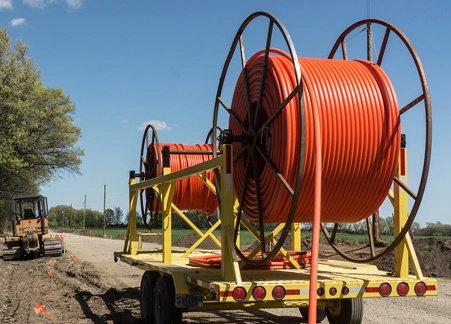
-
 Afrikaans
Afrikaans -
 Albanian
Albanian -
 Amharic
Amharic -
 Arabic
Arabic -
 Armenian
Armenian -
 Azerbaijani
Azerbaijani -
 Basque
Basque -
 Belarusian
Belarusian -
 Bengali
Bengali -
 Bosnian
Bosnian -
 Bulgarian
Bulgarian -
 Catalan
Catalan -
 Cebuano
Cebuano -
 Corsican
Corsican -
 Croatian
Croatian -
 Czech
Czech -
 Danish
Danish -
 Dutch
Dutch -
 English
English -
 Esperanto
Esperanto -
 Estonian
Estonian -
 Finnish
Finnish -
 French
French -
 Frisian
Frisian -
 Galician
Galician -
 Georgian
Georgian -
 German
German -
 Greek
Greek -
 Gujarati
Gujarati -
 Haitian Creole
Haitian Creole -
 hausa
hausa -
 hawaiian
hawaiian -
 Hebrew
Hebrew -
 Hindi
Hindi -
 Miao
Miao -
 Hungarian
Hungarian -
 Icelandic
Icelandic -
 igbo
igbo -
 Indonesian
Indonesian -
 irish
irish -
 Italian
Italian -
 Japanese
Japanese -
 Javanese
Javanese -
 Kannada
Kannada -
 kazakh
kazakh -
 Khmer
Khmer -
 Rwandese
Rwandese -
 Korean
Korean -
 Kurdish
Kurdish -
 Kyrgyz
Kyrgyz -
 Lao
Lao -
 Latin
Latin -
 Latvian
Latvian -
 Lithuanian
Lithuanian -
 Luxembourgish
Luxembourgish -
 Macedonian
Macedonian -
 Malgashi
Malgashi -
 Malay
Malay -
 Malayalam
Malayalam -
 Maltese
Maltese -
 Maori
Maori -
 Marathi
Marathi -
 Mongolian
Mongolian -
 Myanmar
Myanmar -
 Nepali
Nepali -
 Norwegian
Norwegian -
 Norwegian
Norwegian -
 Occitan
Occitan -
 Pashto
Pashto -
 Persian
Persian -
 Polish
Polish -
 Portuguese
Portuguese -
 Punjabi
Punjabi -
 Romanian
Romanian -
 Russian
Russian -
 Samoan
Samoan -
 Scottish Gaelic
Scottish Gaelic -
 Serbian
Serbian -
 Sesotho
Sesotho -
 Shona
Shona -
 Sindhi
Sindhi -
 Sinhala
Sinhala -
 Slovak
Slovak -
 Slovenian
Slovenian -
 Somali
Somali -
 Spanish
Spanish -
 Sundanese
Sundanese -
 Swahili
Swahili -
 Swedish
Swedish -
 Tagalog
Tagalog -
 Tajik
Tajik -
 Tamil
Tamil -
 Tatar
Tatar -
 Telugu
Telugu -
 Thai
Thai -
 Turkish
Turkish -
 Turkmen
Turkmen -
 Ukrainian
Ukrainian -
 Urdu
Urdu -
 Uighur
Uighur -
 Uzbek
Uzbek -
 Vietnamese
Vietnamese -
 Welsh
Welsh -
 Bantu
Bantu -
 Yiddish
Yiddish -
 Yoruba
Yoruba -
 Zulu
Zulu


Dec . 06, 2024 18:43 Back to list
ratcheting cable winch
Understanding Ratcheting Cable Winches A Comprehensive Overview
Ratcheting cable winches are essential tools in a variety of industries, providing reliable solutions for lifting and pulling heavy loads with efficiency and safety. These devices, which use a ratcheting mechanism to secure and release tension on a cable or rope, are widely utilized in construction, transportation, and even recreational activities like boating and off-roading. In this article, we will explore the design, functionality, advantages, and applications of ratcheting cable winches.
Design and Functionality
At its core, a ratcheting cable winch consists of a spool, a ratchet mechanism, a handle for manual operation, and a cable or rope that can be wound around the spool. The ratchet allows the winch to hold tension on the cable securely while preventing it from unwinding unintentionally. This mechanism is crucial for both safety and efficiency, as it ensures that the load remains secured during lifting or pulling operations.
To operate a ratcheting cable winch, the user typically engages the handle, which turns the spool and winds the cable. When pressure is applied to the load, the ratchet clicks into place, locking the spool and preventing slippage. To release the cable, the user simply disengages the ratchet, allowing the winch to unwind gradually. This feature is particularly useful for controlling the descent of a load, making ratcheting cable winches suitable for applications that require precision.
Advantages of Ratcheting Cable Winches
The benefits of using ratcheting cable winches are numerous
2. Ease of Use Ratcheting cable winches are user-friendly, requiring minimal training to operate effectively. This accessibility makes them ideal for both professionals and DIY enthusiasts.
3. Versatility These winches can be used in various settings, from lifting applications in construction sites to pulling vehicles out of ditches. Their adaptability is a significant advantage.
ratcheting cable winch

4. Minimal Maintenance With fewer moving parts compared to other winch types, ratcheting cable winches generally require less maintenance, ensuring they remain reliable over time.
5. Portability Many ratcheting cable winches are lightweight and compact, making them easy to transport and store. This portability is particularly beneficial for users who need to move equipment frequently.
Applications of Ratcheting Cable Winches
Ratcheting cable winches find applications across numerous fields
- Construction They are used for lifting heavy materials like beams and steel frames, helping workers secure loads in place safely. - Automotive In automotive contexts, these winches are popular for towing vehicles or helping with recovery in challenging terrain, such as muddy or sandy conditions.
- Marine Boating enthusiasts often use ratcheting winches to control sails or haul equipment on and off boats, ensuring that heavy loads can be managed safely and effectively.
- Outdoor Recreation Off-road adventurers rely on these winches for vehicle recovery, allowing them to pull their vehicles out of trouble when stuck in difficult environments.
- Entertainment In stage production, winches are often used to move set pieces and equipment safely and reliably during performances.
Conclusion
Ratcheting cable winches stand out as indispensable tools in various industries, offering safety, ease of use, and versatility. Their clever design, characterized by the ratchet mechanism, allows users to handle heavy loads with confidence, making them a preferred choice for professionals and enthusiasts alike. Whether in construction, automotive recovery, marine activities, or recreational applications, these winches have proven their worth time and again, enhancing productivity and safety in numerous contexts. As technology advances, the development of even more efficient and robust winches is likely to further expand their capabilities and applications.
Latest news
What Are Construction Tools and How Are They Used?
NewsJul.11,2025
Professional-Grade Duct Rodding Tools for Superior Cable Installation
NewsJul.11,2025
Enhancing Safety and Efficiency with Modern Hot Stick Solutions
NewsJul.11,2025
Empowering Cable Installation with Advanced Rodder Solutions
NewsJul.11,2025
Elevate Your Cable Installation Projects with Cable Pulling Tools
NewsJul.11,2025
Efficient Cable Handling Solutions: Cable Rollers for Sale
NewsJul.11,2025











